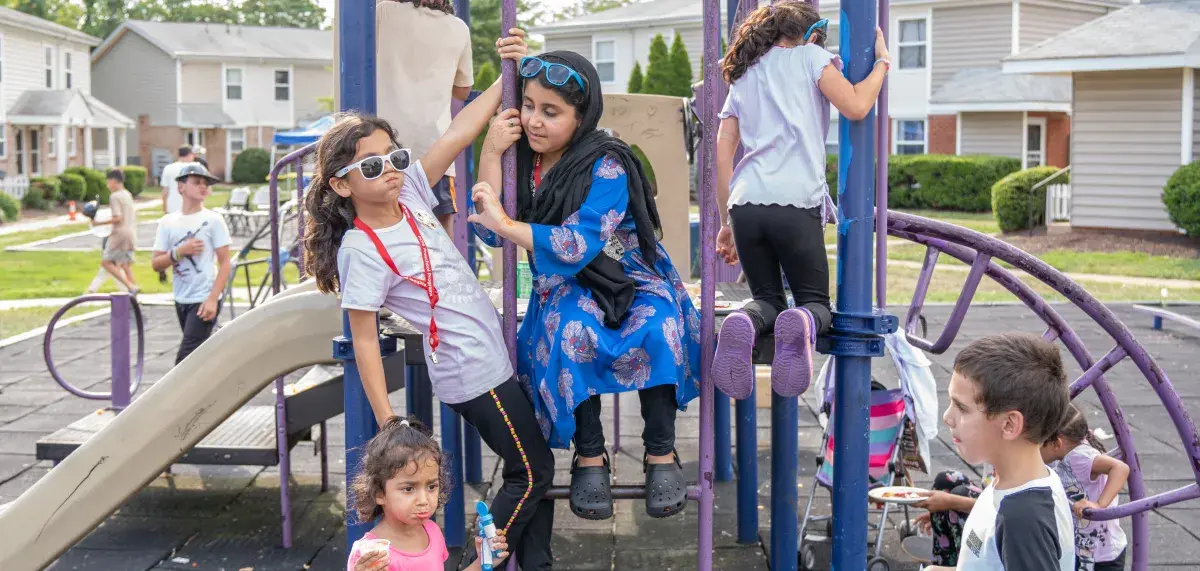Year End Season of Giving
Support affordable housing as we close out 2025.

Owning a home can provide families with stability, financial opportunities, and a sense of community. However, nearly three-fourths of would-be homeowners today cite affordability as the barrier that has prevented them from buying a home. Community Land Trusts (CLTs) and other innovative models can help make homeownership a reality for lower-income households.
The National Housing Trust Community Development Fund (CDF) received a $5 million program-related-investment from the Robert Wood Johnson Foundation (RWJF) that will support CDF’s lending to Community Land Trusts (CLTs). With this investment, CDF will be able to provide flexible, high LTV loans for CLTs which will be paired with technical assistance from Grounded Solutions Network (GSN).
What is a CLT?
The CLT model dates back to 1969, when Black farmers and civil rights leaders in Georgia reclaimed land for collective ownership to provide housing and agricultural opportunities. CLTs are a model of community-driven ownership. Most often, these are nonprofit organizations who manage shared equity housing portfolios alongside other community-focused programs and services. CLTs are increasingly popular as they offer an innovative solution to serve the unique housing needs of different populations.
CLTs develop, preserve, and steward affordable homes by selling the physical structure of a home while maintaining ownership of the land that the homes sit on. By subsidizing the cost through land ownership, CLTs provide unique opportunities for low-to-moderate income households to become homeowners. At the time of sale, a CLT’s resale restrictions ensure that the home will be sold to a new low-to-moderate income household, ensuring affordable access for generations to come.
Why do CLTs need this support?
Traditional investors and developers often see housing merely as a financial asset with profitability as the goal, driving up costs. In contrast, community members see home as more than a financial commodity–it is a place where people learn, grow, and build their lives. Community ownership helps put control of housing back into the hands of the people who live in it, supporting price stability and long-term affordability.
Since CLTs limit the appreciation of the asset, traditional investors are less likely to finance these projects. CDFIs that understand the holistic benefits of the CLT model are needed to support the innovative homeownership model.
Examples of this work in action
With this capital, CDF made an acquisition loan to East New York CLT to purchase their first property –a 20 unit rent-stabilized building in the majority Black, Latinx, and South Asian neighborhood of East New York. After stabilizing the building with improvements to security and plumbing, East New York Community Land Trust (ENYCLT) will work with the existing residents to convert to condos/co-ops with the CLT retaining the ground lease. The 20 low-income households will gain housing stability, agency as this is their building, and will become limited equity owners.
The East New York community is very excited about this project in the neighborhood; tenants from other buildings have been attending meetings to learn more about the opportunity for community ownership in their buildings.
In Washington, DC, this capital supported Douglass Community Land Trust’s first two homes in the Pay It Forward program. Douglass CLT developed this program as they have had homeowners interested in selling homes to Douglass to be kept affordable.
Homes are sold to Douglass at below-market rates, additional subsidy is invested, and the homes are maintained in the land trust as permanently affordable to households at or below 80% MFI. All subsidy initially invested in Douglass CLT properties is retained over time, serving generations of homeowners and occupants without requiring increasing subsidies at each successive sale to keep them affordable.
The DC community benefits from having permanently affordable homes added to the market, enabling more teachers, nurses, service workers, etc. to be able to live in DC. The homeowners, and generations of homeowners, benefit by getting access to affordable living space and having a permanent partner in Douglass CLT.
*********************
This partnership with RWJF and GSN will enable more investment in innovative shared equity homeownership models across the country.
As these types of investments are proven successful –both in their ability to increase affordable homeownership opportunities and to be sound investment opportunities, NHT is hopeful that additional capital will follow. In turn, more households will be able to reap the benefits of homeownership.